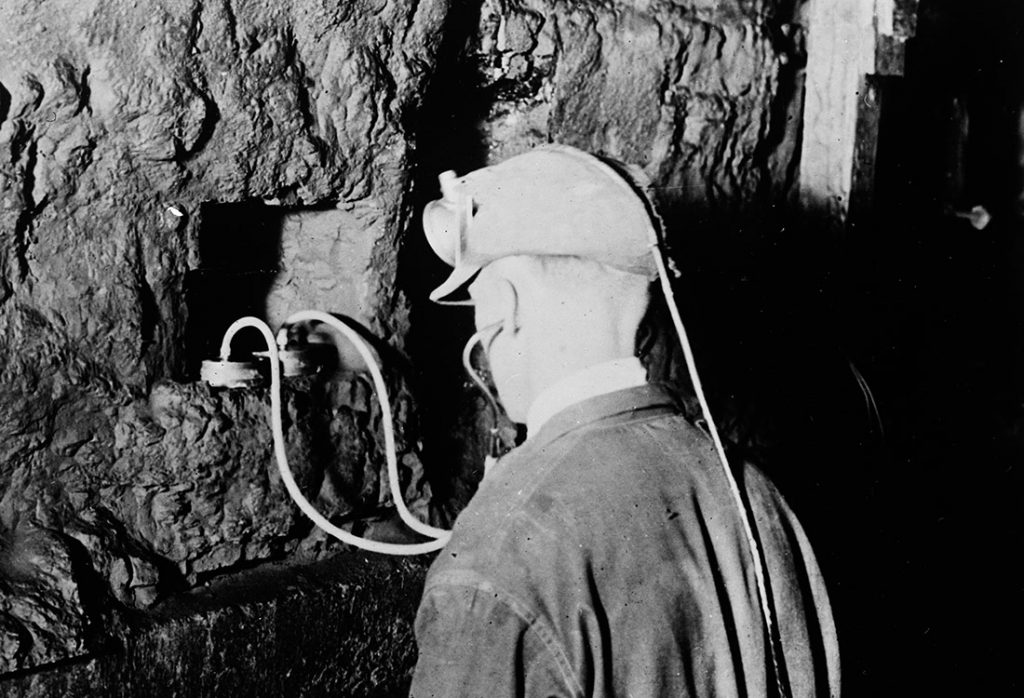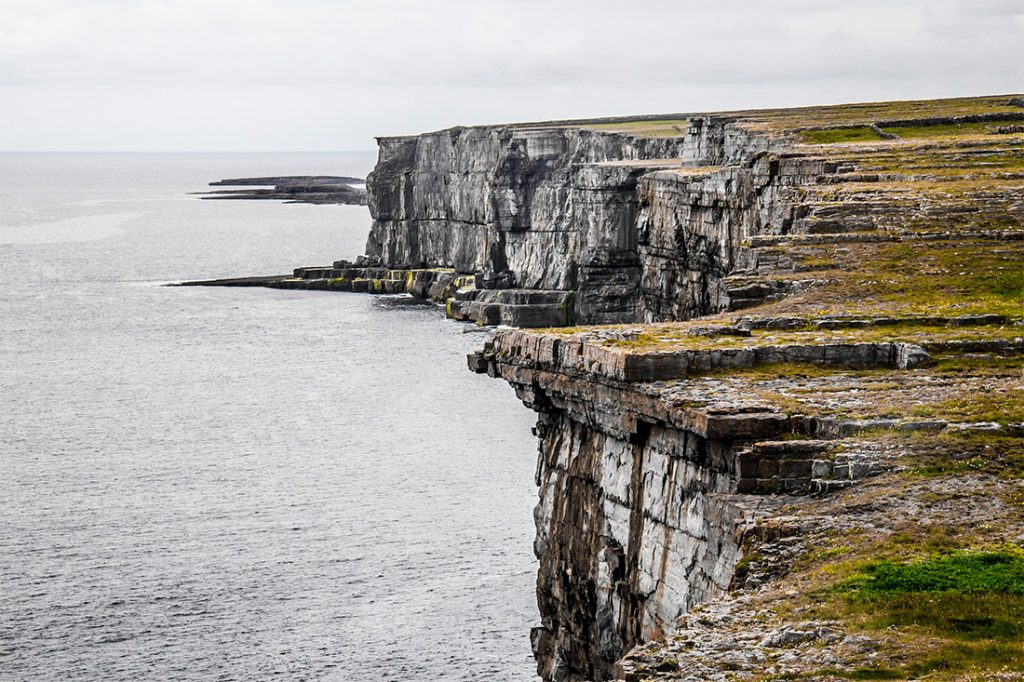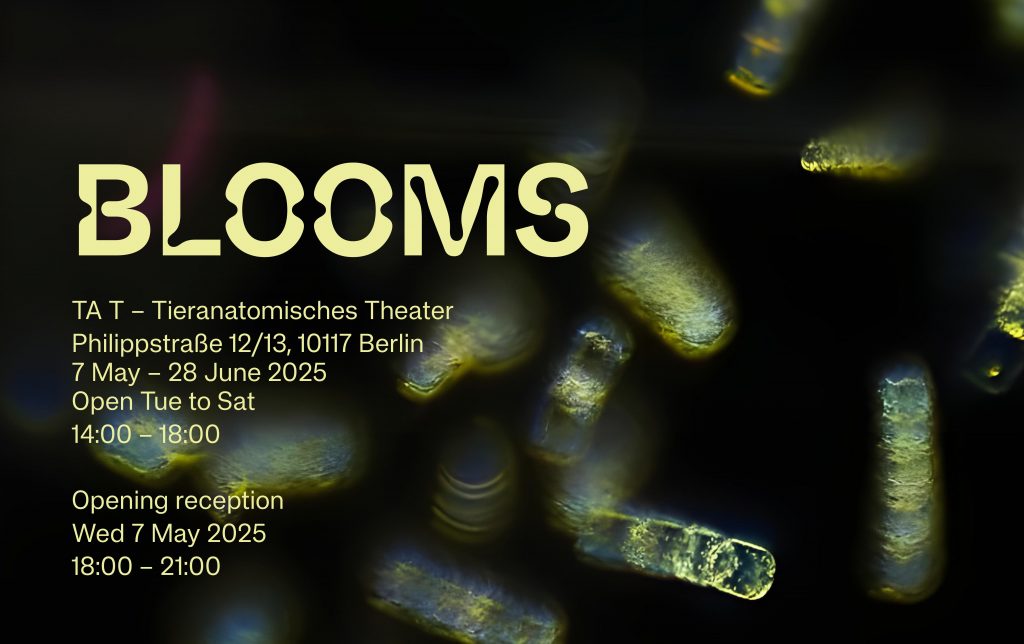Towards Geo-Situated Listening
by Arnau Horta
Immersed in a hyper-visual culture, we seem to have lost the ability to listen to the places where we live. In order to reclaim this sonorous harmony with the landscape, we take a look at several examples that show us ways of relating to the world around us through sound.
“Resonance is the beating of space-time through and around a body. It is not only a vibration that attenuates me, but also an oscillation of the world towards me and of me towards the world through which we both come into being”.
Jean-Luc Nancy, Resonance of meaning

Karst is the title of the installation created by sound designer and multimedia artist Lugh O’Neill as part of the S+T+ARTS residency organised by the CCCB, the Sónar festival and the UPC in the project titled “Repairing the Present”. One of the challenges proposed through this residency was to offer an answer to the question “How might we create a more harmonious city?” O’Neill’s installation is an immersive audiovisual narrative about the layers of memory and the various types of cultural substrates that resonate in different places in the city of Barcelona. The audio material, produced and recorded in each of these locations, is the result of the acoustic interaction between the voice or the sound of each performer’s instrument and the specific resonance of the place chosen in each case.
Drawing his inspiration from some of the forms of speech and song used around the world to describe and map different places and geographical settings, O’Neill’s piece aims to highlight the “ecological amnesia” resulting from the loss of such practices. While contemporary culture and new forms of technology seem to “enable us to record (visually) much more than ever before”, O’Neill explains that “the loss of context and knowledge about the places we inhabit makes them much flatter and our relationship with them has become much emptier”. This is why “re-sensitisation to sound cultures as a way of inhabiting our urban and natural environment is crucial to creating a new ecological awareness”.
The geological reference in the installation’s title (karst landscapes are those formed by the chemical erosion of the bedrock) reinforces a situated understanding of the notion of place and the materialistic sonorous approach proposed by the project. A sound, just like a landscape, is never flat but always unfolds three-dimensionally in space, simultaneously activating the space and transforming itself through it. On the other hand, a place or a landscape can never be reduced merely to its geometry or its physical characteristics; to experience it always involves the subjectivity of the person who inhabits or passes through it. As Dylan Trigg writes in his book The Memory of Place: A Phenomenology of the Uncanny (Ohio University Press, 2012), “being-in-the-world means being placed (…). We are forever in the here, and it is from that here that our experiences take place (…) our orientation and experience of place is never truly epistemic in character but fundamentally affective.” (Ohio University Press, 2012).
Sound mapping
O’Neill cites the texts of the British writer and cartographer Tim Robinson (1935-2020) as one of the main sources of inspiration for his installation. In his various books devoted to the Aran Islands, Robinson gives a superb example of this situated and affective understanding of place. As Pippa Jane Marland suggests, the maps of the islands that Robinson began to create in the early 1970s can be understood as an exercise in “psycho-archipelagraphy”, in other words, an exploration of the archipelago based on the author’s subjective sensations, experiences and perceptions in the manner of situationist psychogeography. “While walking the land,” Robinson writes, “I am the pen on the paper; while drawing this map, my pen is myself walking the land. The purpose of this identification was to short circuit the polarities of objectivity and subjectivity, and help me keep faith with reality”.
Listening attentively and patiently to the different types of sound present in the landscape was a key part of the work of mapping the Aran Islands to which Robinson devoted much of his life. The appreciation of the sound of the Gaelic language (and in particular of those local words used to describe and identify certain places on the islands), as well as listening to the song of the autochthonous birds or the sound produced by the wind and other manifestations of weather were essential in creating this intersubjective and affective approach to the land. The maps created by Robinson are not, therefore, simple two-dimensional (flat) representations of the archipelago, but “deepmaps” (as Eamonn Wall calls them), which treasure the resonances and oral memory of the place.
A year after the publication of Stones of Aran: Pilgrimage (1986), Robinson’s first book on Inishmore, the largest of the Aran Islands, novelist and travel writer Bruce Chatwin (1940-1989) published The Songlines (1987). In the pages of this book, Chatwin goes about gaining a sonorous understanding of the landscape of Australia’s Aboriginal peoples and argues that in this culture (the oldest on earth), song precedes language and lies at its very origins. In Australian Aboriginal mythology, the “Alcheringa” (“The Dreaming” or “Dreamtime”) is a form of sacred “once upon a time”; “a time that lies beyond time” and, as described by Fred Alan Wolf in his book The Dreaming Universe, quoting the Peter Weir film The Last Wave, “is more real than reality itself”. The connection between this ancestral parallel dimension and the present world is articulated precisely through sound and song.
According to this aboriginal (sono)cosmology, the various elements that make up a landscape (caves, hillsides, rocks and streams) are vestiges of that mythical past that remains hidden beneath the surface of this world, waiting to be invoked. It is through the action of singing (or singing them) that the attributes of a given place come into being and the one who sings them exists with them. This simultaneous way of inhabiting and producing the landscape through sound (of “singing the path into being”, one might say) has given rise to a multitude of “songlines”, in other words, “situated” songs that name and identify the terrain while at the same time imprinting it with the rhythm of the steps that pass through it. These “cartographies of simultaneity” or “sonic-geological polyphonies”, as Carmen Pardo calls them in her article for the publication Cartografías de la escucha, are rapidly vanishing due to the alterations caused by the advance of modernisation on both geological landscapes and soundscapes over the course of more than two centuries.

It is also important to bear in mind that this oral, dynamic mapping is only possible when the land is travelled on foot, meaning that travelling by motor vehicles (or horses, which were not introduced into Australia until the end of the 18th century) is incompatible with this way of simultaneously crossing, designating and activating the landscape. Born in the heart of a nomadic culture, these geo-situated songs lose all meaning in the context of a sedentary society. “The man who sings”, writes Carmen Pardo, “allows himself to be inhabited by a sonorous presence that leads him elsewhere, wherever the song takes him. The man who sings must first listen inside himself, find those dreamed-of footprints, recognise his sonorous memory. The man who takes root does not sing; he takes possession of a space, he inhabits it and from there, he observes. When man becomes sedentary, he stops singing”.
Another case of (sono-)cosmology, extensively documented by the American ethnomusicologist, anthropologist and linguist Steven Feld, is that of the Kaluli, one of the clans of the Bosavi people living in the jungles of Papua New Guinea. During his fieldwork, compiled in the book Sound and Sentiment: Birds, Weeping, Poetics, and Song in Kaluli expression (1982), Feld identified the close relationship between the musicality of the Kaluli’s sonorous expression and the sounds of the rainforest. As in the case of Australian Aboriginal peoples, the articulation between the ecology of this environment and the sonorous expression of its inhabitants has a mythical character and is based on a belief in a hidden ancestral presence. The Kaluli believe, for example, that birds are the spirits of their dead and that their song is a constant reminder of “an absence that is present in sound and movement”.
In subsequent research, Feld continued to carry out an in-depth study of the maps of place names in Bosavi songs and how their vocal interpretation serves to articulate the “poetic and ecological relationship” of these people “to the sounds and meanings of the rainforest”. To describe this form of understanding and designating the sounds of the environment, Feld proposed the concept of “acoustemology”. With this term, Feld writes, “I wish to suggest a union of acoustics and epistemology, and to investigate the primacy of sound as a modality of knowing and being in the world (…) my notion of acoustemology means to explore the reflexive and historical relationships between hearing and speaking, listening and sounding (…) Listening and voicing are in a deep reciprocity, an embodied dialogue of inner and outer sounding and resounding built from the historicization of experience”.
Deaf landscapes
However, as the philosopher Jordi Pigem points out in his article “Listening to the voices of the world”, included in the Soundscapes dossier of the Landscape Observatory of Catalonia, we have, for centuries, “scrutinised” landscapes with an eye to extracting the maximum amount of resources and profit. “We have gazed and stared at landscapes in our domineering way” writes Pigem, “but we have not listened to them. We did not listen because we thought that landscapes had nothing to say”. Once you lose the aural attunement with the landscape, “the next step may be the destruction of the physical space itself. It has been said that Australia lost many of its vegetal and animal species after colonisation, simply because the British settlers had no words with which they could make sense of the new landscapes”.
In his article “Against Soundscape” Tim Ingold suggests that the very concept of “soundscape” (coined by the urban planner Michael Southworth and later popularised by Raymond Murray Schafer) draws too heavily from the visual paradigm and the scrutinising gaze mentioned by Pigem. “Attentive listening”, Ingold writes, “surely entails the very opposite of emplacement. (…) the sweep of sound continually endeavours to tear listeners away, causing them to surrender to its movement. Place confinement, in short, is a form of deafness”. In similar terms, Carmen Pardo points out that the concept of soundscape implies “contemplative listening” and suggests that, instead, sound geography may be a way to recover the primarily nomadic character of the ear.
Carrying out sono-geographical and geo-situated exercises similar to those of the Australian Aboriginal peoples or the Kaluli in Papua New Guinea could help us to counter this deaf understanding of landscape and place that seems to be endemic in the present day. Applied to any form of approach (epistemological, aesthetic, historical, etc.) or context (urban, natural) such exercises can help us recover, even if only slightly, from the geographical, ecological and historical amnesia fed by our current hyper-visual culture. By cutting through the “polarities of objectivity and subjectivity” (Robinson) and promoting an intersubjective and affective approach to the places we inhabit, sono-geographic practices allow the ear to regain its nomadic character and thus allow us to re-inhabit “sonorous presences that lead us to different places” (Pardo).
The forms of knowledge and connection to place that emerge from a sono-geographic exploration reinforce and encourage the “inner and outer sounding and resounding built from the historicization of experience” (Feld). Through listening that is not simply static but participatory, affective and tied to memory, our ears invite us to rewrite the place and to resonate with it through the use of song or any other type of vocal or sonorous expression. After all, as Jean-Luc Nancy points out in the quote at the beginning of this article, resonance is not just a particular phenomenon of sound but “the beating of space-time through and around a body. Not merely a vibration that reaches me, but an oscillation from the world to me and from me to the world through which we both take place”.
This article was originally published on the website of CCCBLab | CULTURAL RESEARCH AND INNOVATION.
ARNAU HORTA is a curator, critic, researcher and teacher, and a PhD candidate in Philosophy at the Universitat Autónoma de Barcelona. Both his curatorial work and his research and writing principally revolve around sound analysis and listening.

